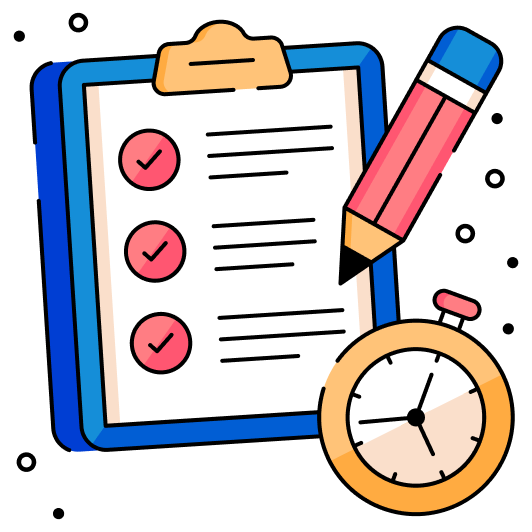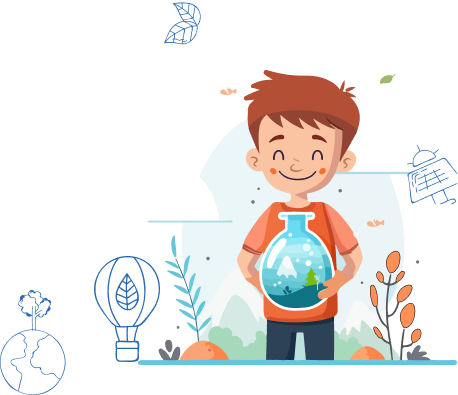What if it Finishes…? Awesome Guide to CBSE Class 5 EVS Chapter 12
What If It Finishes? Exploring Fuel, Energy, and Conservation!
Welcome to iPrep—your super fun learning app!
In this chapter, “What if it Finishes…?” from class 5 EVS, we’ll explore how fuel is made, why it is limited, and what we can do to save it. Our easy-to-follow notes will help you understand What if it Finishes? in a fun and exciting way!
A Bus Journey to the Adalaj Stepwell
Today, our class is going on a school trip to the Adalaj stepwell near Ahmedabad. We’re excited to explore, but the journey itself becomes an adventure! Some of us start counting different vehicles on the road. Cars, buses, motorcycles, and even a few bicycles pass by us. Suddenly, our driver brakes at a red light, and we notice a little boy in a rickshaw coughing because of the smoke from nearby vehicles.
Questions to Think About:
- What vehicles do you see most often on the roads?
- Why do some vehicles produce smoke while others don’t?
Stopping at the Petrol Pump: What if it Finishes?
After a while, our bus stops at a petrol pump. We see big posters and boards with messages like:
- “Petrol and diesel will not last forever. Save it for your children.”
- “Switch off the engine when you stop the car.”
Curious, we ask an uncle working at the petrol pump, “Where does petrol come from?” He explains that petrol and diesel come from deep underground and are made naturally over millions of years. They are limited and won’t last forever!
Think About It: What If It Finishes?
- Why do you think it’s important to save petrol and diesel?
- How can we make each drop of fuel go further?
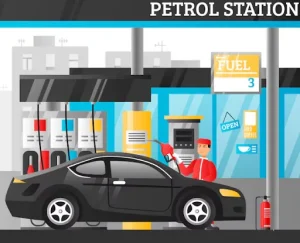
A petrol pump, where vehicles fill up with fuel.
The Future of Fuel: What Happens If It Runs Out?
Divya asks, “Will petrol finish someday?” Uncle nods and says that it takes millions of years to make petrol, but we’re using it up very quickly. So, we need to think of other ways to fuel our vehicles.
Different Ways Vehicles Can Run:
- CNG: Some vehicles use CNG, which produces less smoke.
- Electricity: Electric vehicles are quiet and produce no smoke.
- Solar Energy: Imagine a car that runs on sunlight!
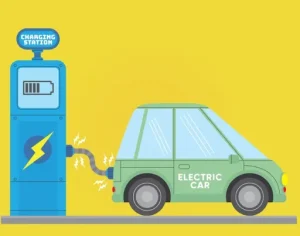
Electric cars don’t need petrol or diesel.
Discussion Questions:
- Why do you think electric and solar-powered vehicles are good alternatives?
- Have you seen an electric or solar vehicle?
From Deep Down: How We Get Petrol and Diesel?
Uncle explains that finding oil isn’t easy. Scientists use special machines to find it deep below the ground, and it’s pumped up and sent to a refinery. There, it’s cleaned and separated into petrol, diesel, LPG, kerosene, and other useful materials like wax, grease, and plastic.
Fun Fact: LPG, which we use for cooking, also comes from petroleum!
Save Fuel, Make It a Habit!
We can make small changes in our lives to save fuel and protect our planet. Here are some ideas:
- Carpool or use buses: This reduces the number of vehicles on the road.
- Turn off the engine when waiting at traffic lights.
- Walk or cycle for short distances.
Activity: Create a Poster
- Make a colorful poster with a slogan like “Save Fuel, Save the Future!” or “Use Less, Save More!”
- Draw pictures of different ways to save fuel and display it in your classroom.
The Price of Petrol Over the Years
Did you know the cost of petrol has been increasing? In 2002, it was around ₹30 per liter, but by 2017, it had gone up to over ₹60! This increase makes it more expensive for everyone, so it’s important to use fuel carefully.
Try This: Ask Your Elders
- Ask your parents or grandparents how much petrol cost when they were younger. Has it changed a lot?
Thinking About Alternatives to Wood and Fuel for Cooking
In some villages, people still use wood and cow dung cakes to cook. But smoke from these can be harmful, especially when the wood is damp. Durga, a girl from Haryana, spends hours collecting wood for her family’s stove (chulha). She and her mother often cough because of the smoke.
Discussion Questions:
- What other ways can people cook if they don’t use wood?
- How can we make cooking easier and healthier for families like Durga’s?
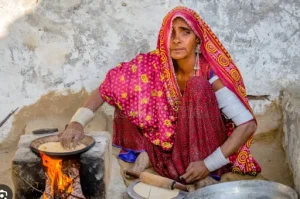
Many people in villages still cook using wood.
Fuel Usage Over the Years: Changing Habits
Durga’s friend Kancha saw a chart showing how the types of fuel people use have changed. Over the years, more people have started using LPG and kerosene, while fewer people use wood. This shift is good for health and the environment!
Find Out:
- What type of fuel is used most in your area for cooking?
- Do you think more people will use LPG and electricity for cooking in the future?
Imagine and Create: Design Your Eco-Friendly Vehicle!
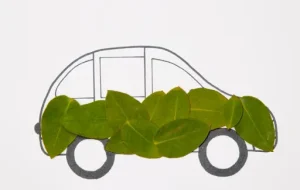
Imagine you’ve been asked to design a new type of vehicle that doesn’t use petrol or diesel. Think about who will use it, like kids, old people, or people with disabilities.
Draw and Describe:
- Draw your vehicle and add cool features like solar panels or a rechargeable battery.
- Write a few sentences about how it works and why it’s good for the environment.
What We’ve Learned: What if it Finishes?
In “What If It Finishes?” we learned:
- How petrol and diesel are made and why they are limited.
- The importance of saving fuel for future generations.
- Different types of fuels and how cooking fuels have changed over time.
Final Activity: Make a Fuel-Saving Plan
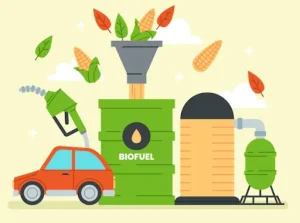
- Challenge: For one week, try to use less fuel. Walk, cycle, or carpool as much as you can.
- At the end of the week, discuss with your family or classmates how much fuel you saved and what changes were easy or hard.
Let’s all work together to save fuel and keep our planet healthy for the future!
To read the NCERT text What if it Finishes…? click here.
To read notes for the previous chapter Sunita in Space, click here!
Practice questions on Chapter 12 - What if it Finishes...?
Get your free Chapter 12 - What if it Finishes...? practice quiz of 20+ questions & detailed solutions
Practice Now